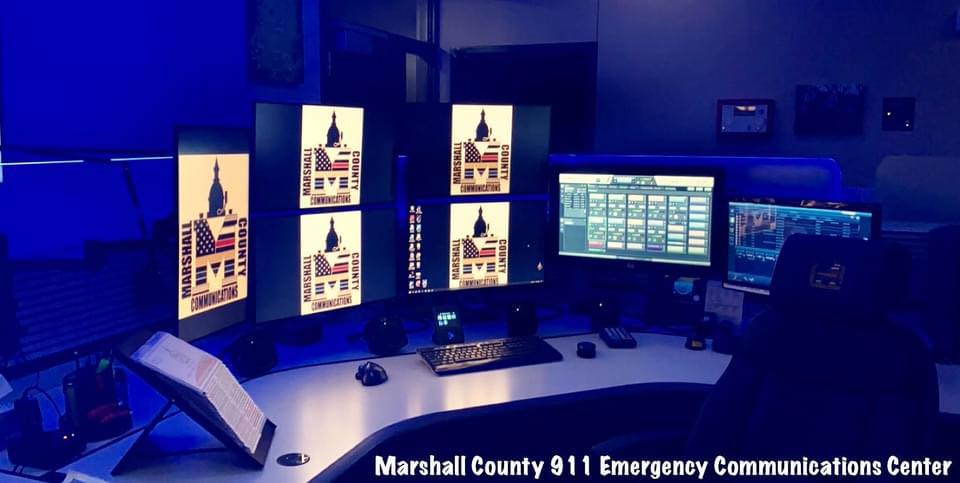Answering more than phones — Recognizing the true work of 911 professionals part 1

When people think about 911, the image that often comes to mind is a person sitting at a desk answering phones and passing information along to police officers, firefighters, or paramedics. That may have been somewhat accurate when the very first 911 call was made in Haleyville, Alabama, in 1968. Back then, the system was designed to be simple: a number that was easy to remember and quick to dial in an emergency. The role of the person answering the phone was considered straightforward too, take the details, send help, and move on to the next call.
Fast forward to today, and that picture could not be further from reality. What was once thought of as a clerical task has become one of the most complex, demanding, and essential jobs in public safety. The modern 911 telecommunicator is the first, first responder when help is needed and the 911 call is made. They are a crisis manager, a lifeline, and often the first and most critical link in saving lives. They are trained to remain calm in chaos, to pull vital details out of panicked callers, to provide step-by-step instructions that mean the difference between life and death, and to safeguard the responders they are sending into dangerous and unpredictable situations.
Think for a moment about what they handle in the course of an ordinary shift. A telecommunicator may take a call from a frantic parent whose child has stopped breathing, talking them through CPR until help arrives. Moments later, they may be helping a victim trapped in a vehicle after a crash, explaining how to stop the bleeding while rescue units are still enroute. That same shift may bring them into the middle of a domestic violence call, where they must keep a victim calm, gather vital information, and at the same time coordinate law enforcement’s safe response. They may talk someone down from suicide, give instructions for delivering a baby, or help a caller who is alone and terrified during a home invasion. All of this is done while managing radios, tracking units in computer-aided dispatch systems, and keeping multiple agencies updated in real time.
This is not clerical work. This is public safety. And it is why there is such an urgent push across the country for the reclassification of 911 professionals.
Currently, at the federal level, 911 telecommunicators are still classified as “clerical” or “administrative support.” That classification is a relic from the 1960s, when the profession was in its infancy and the work was seen as little more than answering phones. But the reality today is starkly different. These professionals are highly trained, highly skilled, and directly responsible for the safety and survival of both citizens and responders. They are the first, first responders, and they should be recognized and supported as such.
Reclassification is about more than titles. It is about accurately reflecting the responsibilities of the profession, opening doors to improved training opportunities, ensuring access to mental health support, and establishing pay and benefit structures that match the demands of the work. Most importantly, it sends a clear message to the public: these individuals are not anonymous voices in a room somewhere. They are the calm in the storm, the people who guide us through the most terrifying moments of our lives, and they are vital to public safety as those responders arriving on the scene.
Technology has changed the profession too. Next Generation 911 systems are introducing translation text-to-911, video capabilities, and improved GPS location services. These tools save lives, but they also add to the complexity of operations. Telecommunicators are now expected to process more data, faster, and with greater accuracy than ever before. The demands are growing, not shrinking, and the need for recognition and support grows with them.
The heart of the work, though, has never changed. It is still about people, helping them, protecting them, and being there in their worst moments. What has changed is the depth of training, the breadth of responsibility, and the recognition that the person on the other end of the line is just as much a first responder as the ones arriving in uniform.
Here in Marshall County, we see this reality every day. As Director of the Marshall County Communications Center, I could not be prouder of the 911 Communications Specialists who serve our community. Their work is not easy. It is filled with stress, long hours, and an emotional toll that is hard for anyone outside the profession to truly understand. But they show up every day with determination, compassion, and professionalism. They give their blood, sweat, and tears for this community, often sacrificing their own peace of mind to ensure others are safe.
What makes me proudest is not only how they perform during emergencies, but how they carry themselves as members of this community. They support one another, they volunteer, they educate the public, and they show up in ways that remind us all what “Marshall County Strong” really means. They are rarely seen, but they are always heard, and their impact is felt in every life saved, every responder protected, and every family given hope on the worst day of their lives.
As Marshall County continues to grow, the demands on our 911 system grow with it. More people means more calls, more complexity, and more pressure on those who sit behind the consoles. But it also means more opportunity to strengthen the bond between the community and the people who protect it. Public education plays a key role here. The more our citizens know about how 911 works, when to call, what to expect, how to provide clear information, the stronger and more effective our system becomes. This partnership is what makes communities resilient.
Looking to the future, we know that emergencies will continue to come, whether in the form of natural disasters, medical crises, or everyday tragedies. We also know that technology will continue to change the way we respond. But no matter how advanced the systems become, the most critical factor will always be the people, the telecommunicators who are there, ready to answer the call.
That is why reclassification is so essential. It is not about prestige or politics. It is about truth and fairness. It is about aligning perception with reality and ensuring that those who hold this incredible responsibility have the recognition, resources, and support they need. Because when the storm comes, when the worst happens, and when seconds count, it is the 911 telecommunicator who is there first, steady, skilled, and unshakable.
From that first call, to the bustling communications centers of today, 911 has come a long way. But its strength has always been, and always will be, the people who answer the call. Here in Marshall County, those people embody the very best of public service. They are the unseen backbone of our community’s safety, and they are here for you on your worst day!
——-
Rhonda Braudis, RPL/CPE, is the Marshall County 911 Communications director.

